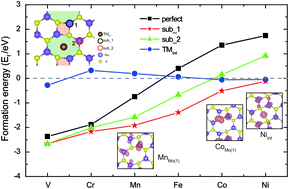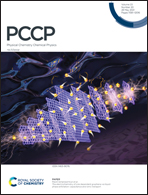Dopants and grain boundary effects in monolayer MoS2: a first-principles study
Abstract
The structural, electronic and magnetic properties of large area chemical vapor deposited monolayer MoS2 rely significantly on the presence of grain boundaries (GBs) and defects. In this study, first-principles calculations were performed to investigate the electronic and magnetic properties of transition metal doped MoS2 GBs. The experimentally observed 60° tilt GBs were demonstrated with four different atomic configurations and the nonmagnetic 4|8ud GB has the lowest formation energy among the considered models. Further calculations of 4|8ud GBs doped with TMs, such as V, Cr, Mn, Fe, Co and Ni, indicate that dopants can significantly lower the formation energies of the doped GBs compared to the perfect monolayer MoS2 by occupying the GB region instead of within the grains. Magnetism can be achieved in doped GB systems by careful defect engineering. CoMo, MnMo and Niint in 4|8ud GBs are predicted to be magnetic and simultaneously energetically favorable. The electron coupling between the doped TM and surrounding GB atoms is expected to induce magnetism and high electron mobilities into the systems. This study may pave the way for optimal design of MoS2-based electronic and spintronic devices.



 Please wait while we load your content...
Please wait while we load your content...